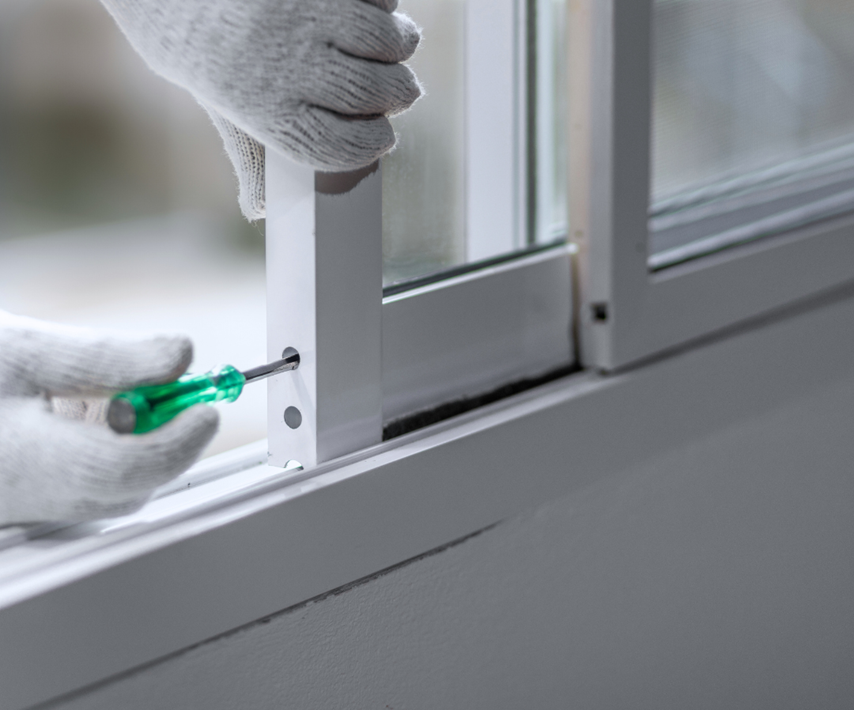Sliding doors are common architectural feature in Australian homes and businesses. Unlike hinged doors, sliding doors don’t need clearance to open and close, and are a practical space-saving feature and great option when creating flow between different rooms. Both external and internal doors can also enhance the look and feel of your home, ensuring tons of natural light and easy access between outdoor and indoor areas.
They’re a design element seen with patios, decks and balconies, as well as bathrooms, bedrooms and living rooms. Besides the different door designs, all slide doors use rollers or wheels to ensure smooth operation. These are fitted within their own carriages and installed over heavy-duty bars or tracks mounted above the door opening.
Doors suspend from hangers, while guides, fixed to the floor, keep door panels on track and prevent them from swinging out. Additional hardware can include door stops in the rails to prevent from the door going too far or derailing, jump blocks that eliminate the risk of vertical derailing, and connectors that connect two or more rails.
While generally sturdy and long-lasting, rollers see the most wear, leading to irritating issues, including difficulty when opening and closing, jolting and jerkiness, unusual grinding and screeching sounds or derailing. In cases like these, you’ll want a reliable sliding door roller replacement to restore the functionality of your sliding doors.
Roller Functionality

Rollers are essential hardware that ensure smooth opening and closing and keeping the door aligned on the track. This is their main role. The parts also provide:
- Weight distribution: Rollers distribute the weight on doors along the track, supporting the door and ensuring it stays stable.
- Reduced friction: For smooth and quiet operation, choose sliding door rollers that minimise the friction between the track and the door.
- Lower wear and damage: Keeping doors off the track and reducing friction also impacts overall door longevity, with lower wear and damage.
- Stability: Choose twin-bogie rollers over fixed single or tandem rollers for larger and heavier doors, and where stability is key.
- Adjustability: Height adjustment and aligning the rollers to the tracks is done by fasteners, ensuring a clean fit and seamless operation.
Signs of Faulty Sliding Door Rollers
Several giveaway signs will tell you when the rollers on your sliding door need replacing. If you have a harder time opening or closing the door, hear grinding or grating sounds or see visible damage such as rust or flat spots in the rollers, time to look for working replacements. Jerky or uneven movement, stuck, crooked or derailed doors and rollers rubbing against the track or door frame are other considerations. Misalignment will also cause gaps and improper sealing.
Key Buying Considerations
Roller Types
To accommodate the size and weight of different sliding doors, choose the right sliding door roller replacement type. Most residential doors use tandem rollers, with a pair of wheels mounted onto a single housing or roller carriage for improved weight distribution. Depending on the track type, wheels and matching hardware assume a convex shape or come in a flat design.
Single rollers, with a single wheel and housing, are more common in lighter and smaller doors and meant for less frequent use. On the other end of the size and weight spectrum are quad rollers with four wheels per housing for optimal weight distribution and smoother operation. Newer, twin-bogie designs feature four rollers mounted in a pivoting bogie suspension. This allows rollers to move independently of each other, ensuring better stability and more consistent movement in heavier doors.
Materials
Quality materials ensure longevity, as the rollers bear the weight of the door and smooth operation with lower noise levels. There are several choices in this respect, dependent on the factors like overall door weight and size, materials used in the tracks, and where the doors are located. When considering a working sliding door roller replacement, consider the following materials:
- Nylon or polyurethane: Roller wheels in nylon or polyurethane are all about whisper-quiet operation and reduced track wear. The materials are also heat and corrosion-resistant, making them ideal in exterior sliding doors and coastal areas. While durable, they are often matched to lighter sliding doors.
- Steel: Choose steel for harsher commercial or industrial settings with larger and heavier sliding doors. Steel does trump nylon and polymers for load capacities, endures less wear when in contact with abrasive materials, but can cause track damage and more frequent track replacements.
- Stainless steel and brass: These materials offer a good balance of durability and aesthetics. Both are more resistant to corrosion, making them the preferred choice in coastal areas. And the high-gloss and polished finished goes well with the design elements in newer doors. Both, though, are costlier than untreated steel or nylon types.
Other buying consideration are matching roller height to the door, ensuring widths match that of the track to prevent excess play, and maintenance needs and features like sealed bearings for fewer long-term operating issues.
